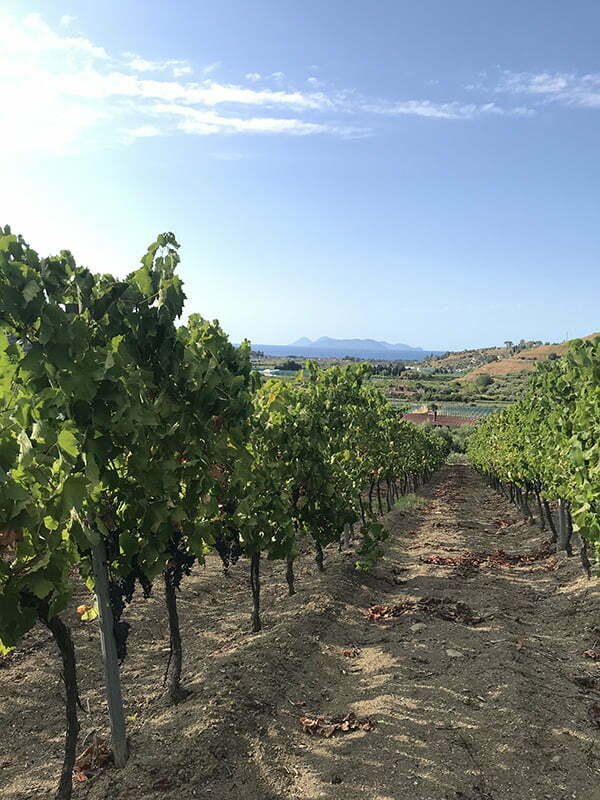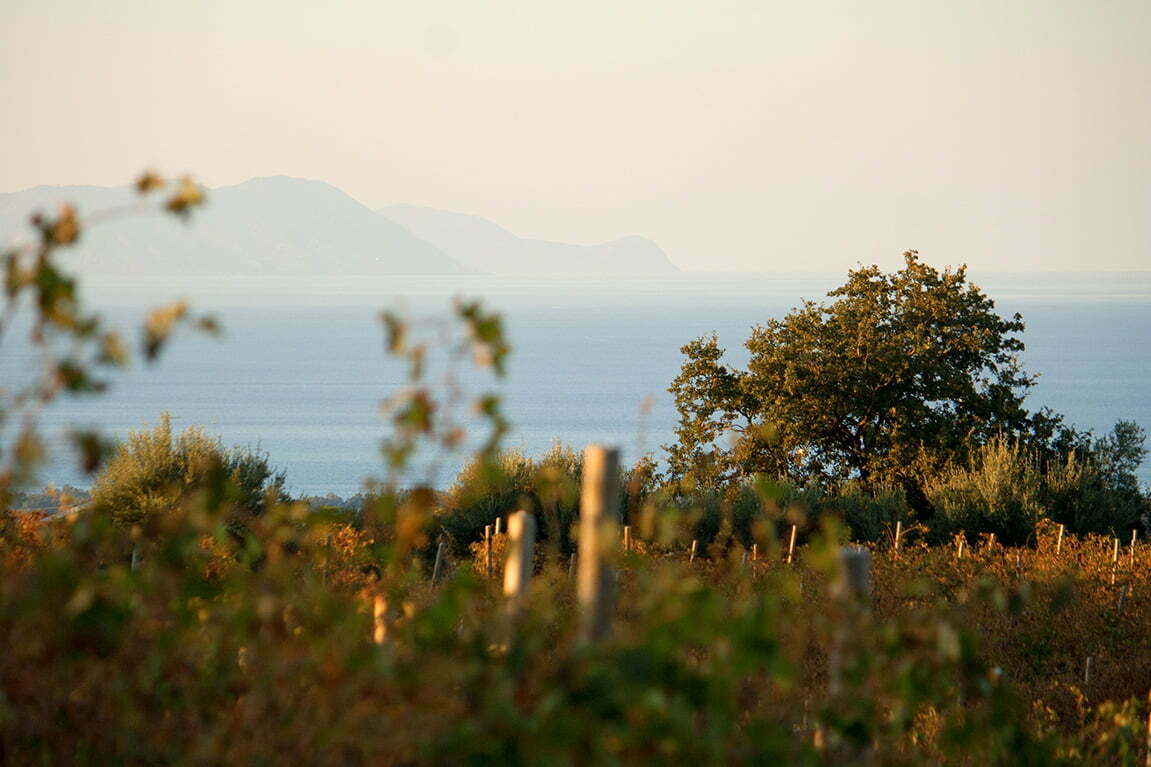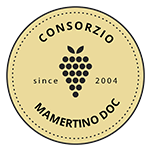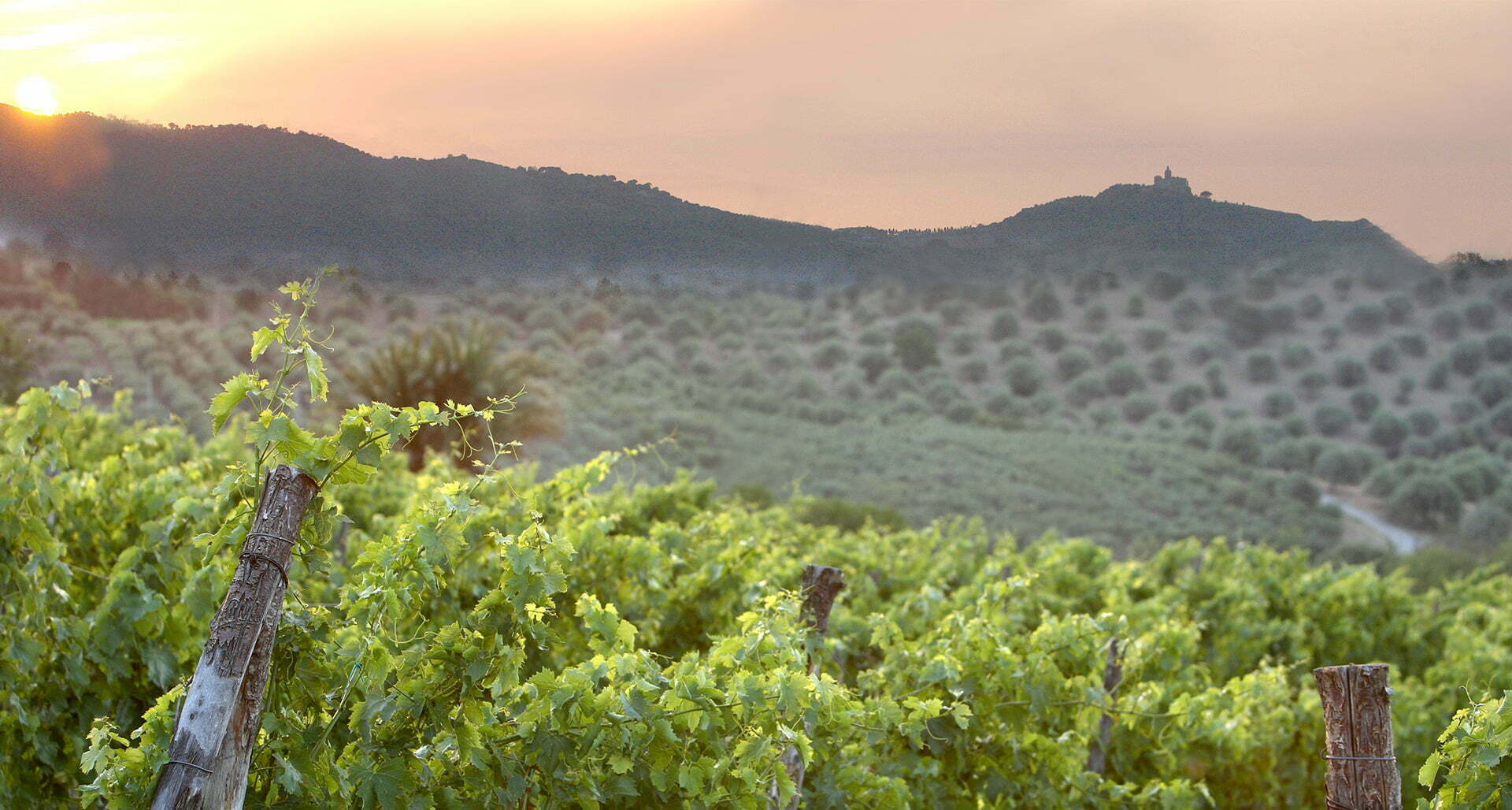The story of Doc Mamertino wines dates back to times long gone; it is said that it was Julius Caesar’s favourite wine, back when it was possible to taste over one hundred wines in Ancient Rome from all over Europe.
The centuries-old winemaking history of this area is proof that the culture of wine is intimately linked to the life of the local population (at least since 289 BC) when the “Mamertini”, a population of Campania origin, settled in the plain of Milazzo.
The story of this symbolic wine has its roots in ancient history, so much so that it is appreciated and mentioned in the De Bello Gallico. In fact, testimonies that have come up to light showing some anecdotes related to Julius Caesar who writes that he offered these wines to his guests during the banquet held to celebrate his third Consulate. Strabo, the great Roman geographer, classified Mamertino among the best wines of the time and Plinio placed it in fourth place out of 195 wines, also Marziale who wrote ” …give Mamertino the name you want, maybe that of the most famous wines “.
Despite its millenial history, until recently this wine had almost completely disappeared from the wine scene. Then, in 2004, the DOC gained recognition (the decree of the Ministry of Agriculture and Forestry Policies was published in the Official Gazette of the Italian Republic n ° 214 of 11/09/2004). Some producers have since recovered and re-evaluated it. Today, the cultivation dominates the Tyrrhenian slope, embracing 31 municipalities in the province of Messina and, thanks to the 13 estates of the Doc Mamertino association, it covers about one hundred hectares of vineyards.

The story of Doc Mamertino wines dates back to times long gone; it is said that it was Julius Caesar’s favourite wine, back when it was possible to taste over one hundred wines in Ancient Rome from all over Europe.

The centuries-old winemaking history of this area is proof that the culture of wine is intimately linked to the life of the local population (at least since 289 BC) when the “Mamertini”, a population of Campania origin, settled in the plain of Milazzo.
The story of this symbolic wine has its roots in ancient history, so much so that it is appreciated and mentioned in the De Bello Gallico. In fact, testimonies that have come up to light showing some anecdotes related to Julius Caesar who writes that he offered these wines to his guests during the banquet held to celebrate his third Consulate. Strabo, the great Roman geographer, classified Mamertino among the best wines of the time and Plinio placed it in fourth place out of 195 wines, also Marziale who wrote ” …give Mamertino the name you want, maybe that of the most famous wines “.
Despite its millenial history, until recently this wine had almost completely disappeared from the wine scene. Then, in 2004, the DOC gained recognition (the decree of the Ministry of Agriculture and Forestry Policies was published in the Official Gazette of the Italian Republic n ° 214 of 11/09/2004). Some producers have since recovered and re-evaluated it. Today, the cultivation dominates the Tyrrhenian slope, embracing 31 municipalities in the province of Messina and, thanks to the 13 estates of the Doc Mamertino association, it covers about one hundred hectares of vineyards.
Thanks to the intervention of man, viticulture in this region boasts a glorious and proven tradition, significant within the geographical and environmental context in which we find ourselves.
A species dispersion that is characterized by a cultural heritage of elements of absolute uniqueness and rarity, where there is tangible proof of how the traditional vine cultivation methods have determined the definition of specific technical-productive aspects. These include the widespread alberate cultivation system, mainly on low and medium hill soils with a clayey-siliceous content, rich in potassium and low in limestone, nitrogen and phosphorus.

In the 1930s the total production amounted to about 3,000 hl – of which 500 hl was destined for bottling, and marketed on the main national and foreign markets under the name ‘Mamertino’. It had also been boosted at the beginning of the twentieth century by the Cantina Sperimentale di Milazzo and, in the following years, by some local wineries. After the first half of the 1960s, thanks to the new course of Sicilian viticulture, there was a gradual restructuring of wine production but, above all, the discovery of new vine cultivation techniques. The characteristics of the grapes subsequently achieved, encouraged the modification of the classic production platform of Mamertino which, from dessert wine, became dry white and red table wine. Events that, in 2002, led producers and winemakers operating in the Mamertino area to start the process of establishing the DOC. A process that concluded two years later and that did not encounter any particular difficulties of development, thanks also to the historical connotation of this wine. Today the DOC Mamertino has 350 hectares for a production of 690.3 hectoliters in a unique area which continues to grow, thanks to the commitment of local producers and winemakers.

In the 1930s the total production amounted to about 3,000 hl – of which 500 hl was destined for bottling, and marketed on the main national and foreign markets under the name ‘Mamertino’. It had also been boosted at the beginning of the twentieth century by the Cantina Sperimentale di Milazzo and, in the following years, by some local wineries. After the first half of the 1960s, thanks to the new course of Sicilian viticulture, there was a gradual restructuring of wine production but, above all, the discovery of new vine cultivation techniques. The characteristics of the grapes subsequently achieved, encouraged the modification of the classic production platform of Mamertino which, from dessert wine, became dry white and red table wine. Events that, in 2002, led producers and winemakers operating in the Mamertino area to start the process of establishing the DOC. A process that concluded two years later and that did not encounter any particular difficulties of development, thanks also to the historical connotation of this wine. Today the DOC Mamertino has 350 hectares for a production of 690.3 hectoliters in a unique area which continues to grow, thanks to the commitment of local producers and winemakers.


